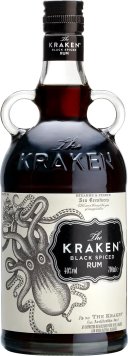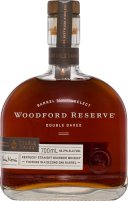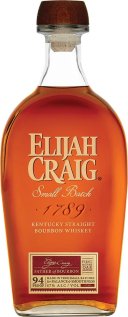The Kraken Black Spiced Rum
The Kraken Rum is an imported rum from the Caribbean blended with 13 secret spices . Named for the sea beast of myth and legend, The KRAKEN RUM is a strong, rich, black and smooth rum that's aged in barrels for 24 months to impart classic dark rum flavours of cinnamon, ginger and clove.
Woodford Reserve Double Oaked Bourbon Whiskey
A new Woodford that’s set to be part of the core range. This is finished in heavily toasted, lightly charred barrels.
Southern Comfort Whiskey Liqueur
In 1874 M.W. Heron, a bartender, developed Southern Comfort in his bar near La Rue Bourbon in New Orleans and first served it in traditional fashion from a whiskey barrel. In 1934 after a short break in production due to Prohibition, Southern Comfort introduced their current distinctive label featuring the now famous Currier and Ives lithograph of a Southern plantation house on the banks of the Mississippi. The plantation is known as "Woodland Plantation", built in 1834. Southern enthusiasts can visit the newly renovated mansion, which now operates as a nine bedroom country inn. Southern's identity as a bourbon lies only in its origins. Its inception was in an awful whisky batch that Heron was attempting to improve. Actually, Southern Comfort was originally a Peach Liqueur, and one of the few peach liqueurs on the market. Produced using neutral spirit and over 100 ingredients, the final liqueur matured for eight months prior to bottling. Since then the formula has changed and Southern is now branded a 'whiskey liqueur'. Sweet and rich with a molasses background and faint medicinal flavour, it's America’s “Take it easy Drink”. Enjoy it straight, on the rocks or with cola.
Kings County Straight Bourbon
Tasting note: [Batch 133A] Made from New York State organic corn and malted barley from the U.K. Bright topaz / polished copper. Delicate woody aromas of balsa, fresh cut cedar and hints of liquorice before the sugars come to the fore as banana bread, light sticky date, caramel fudge and vanilla. A peppery edge balances the sweeter notes. Youthful and chewy but already delicious with well rounded flavours of salted caramel, nut chocolate, popcorn and black peppercorns. The finish adds dried banana, peach and late caramel fudge. At just over two years young, this Bourbon already has impressive structure and feel. 45% Alc./Vol.
Elijah Craig Small Batch Kentucky Straight Bourbon Whiskey
Elijah Craig are another of Heaven Hill's successful brands. When a surge in popularity for the 12 year led to an inability to meet demand, it was removed from US shelves in 2016 (no surprise, age statements are now sought after). The core whiskey has since been re-labelled “Small Batch". Typically made from a mash bill of 75% corn, 13% rye and 12% malted barley, rumour has it this contains a fair proportion of whiskeys in the 8-12 year old range.
Eagle Rare 10 Year Old Bourbon Whiskey
"One soaring, beautiful eagle." - Jim Murray's Whisky Bible We first tasted Eagle Rare in 2006 when it was labelled 'Single Barrel'. As of 2019, that changed to a multi-barrel blend with a ten year old age statement. It remains a standout value - an American whiskey with the unusual credentials of maintaining a reputation for exceptional quality while being relatively easy to come by. The profile confirms a #1 Mashbill from Buffalo Trace, which is reported to be low rye (10% or less), yielding notes of caramel, new charred oak, liquorice bullets, cocoa and peppermint rock lollies plus cinnamon in support. The complexity grows with time. Re-tasted from a 20ml sample, it's lean on entry, but fills out beautifully into a medium-bodied, chewy whiskey with muted rye spices before vanilla and Bounty Bar flood the finish, the sugars checked by balancing oak and more creamy vanillas. Ever reliable and better than many Bourbons at twice its price, Eagle Rare remains hard to beat. 45% Alc./Vol.






